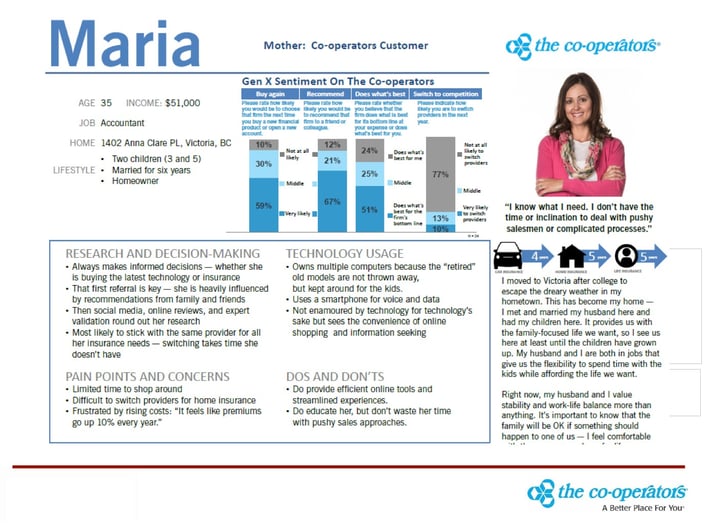 Most marketers make stuff up. They sit in nice comfortable offices and imagine what interests buyers and then create “copy” and “campaigns” typically with the help of equally clueless agencies.
Most marketers make stuff up. They sit in nice comfortable offices and imagine what interests buyers and then create “copy” and “campaigns” typically with the help of equally clueless agencies.
But as I’ve said hundreds of times on this blog and in my books and live presentations, the more you know about buyers, the better aligned your marketing and sales becomes. The strategy of buyer persona research combined with journey mapping is an incredibly powerful way to rise above the competition.
At a recent presentation I met with Paul Mlodzik, Vice President, Marketing and Communications at The Co-operators Group Limited and learned how he has implemented buyer personas and journey mapping. Indeed, The Co-operators is among the very best examples of marketing strategy based on understanding buyers I’ve ever seen.
This blog post is about how the Co-operators Group implemented buyer personas and later this week, I’ll publish a follow-up on how they use journey mapping.
Understanding buyers is the key to marketing success
The Co-operators Group Limited is a Canadian-owned co-operative with more than $40 billion in assets under administration. Through its group of companies it offers home, auto, life, group, travel, commercial and farm insurance, as well as investment products. The company sells to people from all ages and backgrounds and is both a B2C and B2B marketer.
The first step was identifying discrete buyer personas and then interviewing representatives of each group.
“It took five or six months to get through all of this because you really do need to sit down with a lot of people,” Paul told me. “We would interview them on the phone to figure out what are the common characteristics of the things that they’re saying. We generated a very large database of actual verbatim quotes to see how people are thinking and the type of words that they’re using.”
This kind of one-on-one telephone or in-person research is time consuming but when done well yields incredibly valuable information. To help with the process, Paul and his team worked with Forrester Research.
“When we came out with the group of personas, we had a whole vocabulary around each persona about the types of things that they would say,” Paul says. “We learned about technology use, how they live, where they live, who they ask for advice and how they go about interacting with different types of products and services, not just in our market but in general, and then specifically in our market.”
Name each persona to make them come alive
To ensure that Paul and his team are completely dialed into each persona, they named each and then created very detailed profiles used by the team to create their marketing strategies. So that others in the company are aware of personas, they created posters out of them, which are located around the company offices.
Maria, whose short buyer persona profile is below, is an example of the sort of detailed information that Paul and the team learned by speaking with many people who are representatives of the persona. They have also created an interactive persona exhibit which will be touring offices across the company.
“By actually doing the work and doing it properly from a research-based perspective, you get a tremendous sense of confidence about things,” Paul says. “I really like the fact that I was surprised by some of the things we learned. As a marketing veteran, you think you know about buyers. But I like being surprised because it gives me something else to work with. It gives me a hole to plug. It gives me a new need to go after.”
The confidence that Paul and the team developed through research means that he can focus on only the most important strategies and tactics. It gets them away from the “list marketing” that so many people do when they are unclear about the best way to reach buyers.
“We’re doing less things but each more intensely,” Paul says of how he does marketing now vs. before the research. “We have found we’re doing less activity and getting more results.”
The process also helps to align marketing staff with the right roles. “As a result of doing this work, you end up freeing up headcount,” Paul says. “Instead of replacing people in roles that become vacant, we created different roles with different areas to focus on based on what we discovered during the persona process. It has changed the way that we do business.”
Later this week, I’ll post more of my talk with Paul so we can learn how he does journey mapping.

